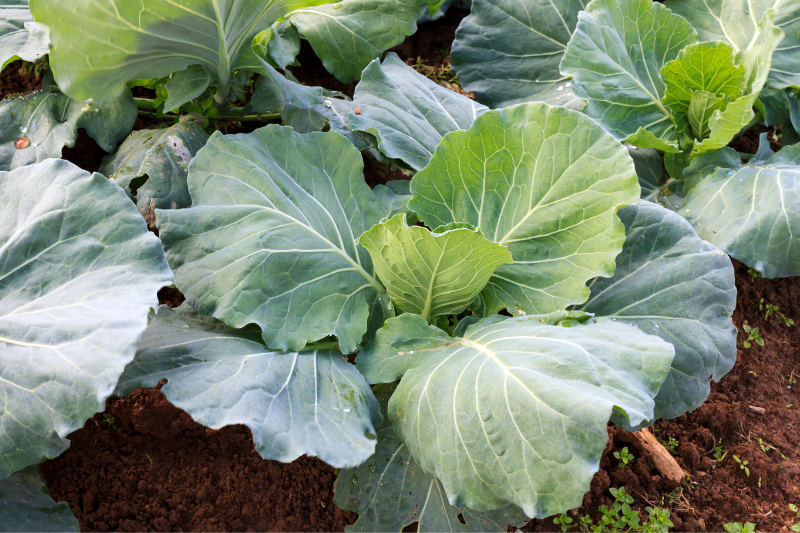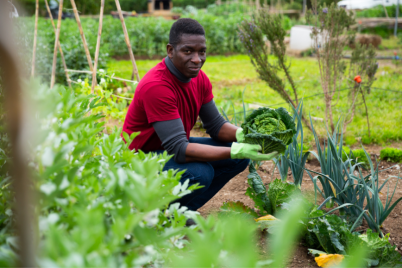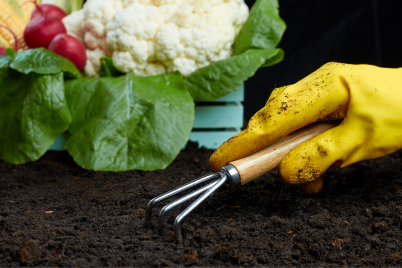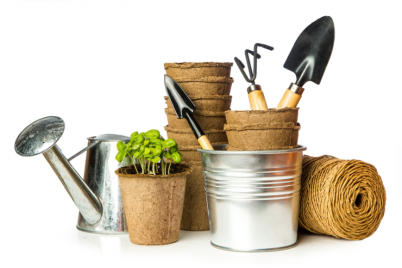Green leafy vegetables are full of minerals, vitamins, and fiber for a healthy diet.
BY JOYCE WOODSON, Garden Enthusiast
Greens of all sorts can be started now from seed. Greens have few diseases or pests from fall through late winter, so other than watering and fertilizing; they are easy to grow and very productive. Green leafy vegetables are also full of minerals, vitamins, and fiber for a healthy diet.
TIP: When growing leafy greens, cut leaves as you need them; do not wait to cut the entire plant. Leafy greens will continue to grow as you harvest. Just don’t remove more than half of the leaves at one time. The leaves are needed for the plant to produce energy to grow.
Collards: Collards are a mainstay in southern gardens. They could grow all year in our area. In fact, I have a neighbor who has six-year-old collard plants, but she sprays heavily with insecticide to keep them alive during summer bug infestations. I don’t recommend that approach since they are so easy to grow without chemicals during their preferred season.
Collards require full sun to develop a strong enough stalk to hold up giant, heavy leaves. When planting, be sure to thin collards 18 to 24 inches from each other. Collard leaves are huge and will easily overshadow each other.
Eighteen to 24 inches is a lot of empty space when collards are small, so I grow carrots, mustards, or radishes (in cool weather) between collards.
Mustards: Not everyone likes mustards because they can have such a strong bite. However, many varieties of mustards are mild enough to use in salad. I regularly grow five varieties: curly Southern Giant, Giant Red, Tokyo Bekana, Tendergreen, and Wasabini.
Tokyo Bekana and Tendergreen are mild and tender enough for a salad, while Wasabini has a hot, spicy bite as strong as its namesake, wasabi. All are very easy to grow, but you will need to buy the last three types online. Mustards prefer full sun but can survive with some afternoon shade.
Turnips: My family loves turnips leaves and especially loves roasted turnip roots. Turnip leaves cook faster than collards and is milder than standard mustards. They prefer full sun and will produce better leaves with more light. They need more moisture than other greens, but it’s worth the extra attention.
Kale: Right now, I have six different kale started: Red Russian, Portuguese, standard curly kale, Lacinato (aka Dinosaur Kale) and Ethiopian. Unlike the other greens, kale can be planted in parts of the garden that receive less light. I have had great success with as little as six hours of direct sunlight.
These varieties are all slightly different and worth trying. Ethiopian is a tall plant, reaching nearly four feet in ideal conditions. Plant it behind other plants with similar needs. Portuguese has the mildest flavor and appears to be a cross between cabbage and kale. Lacinato has leathery-looking leaves with very deep crinkles but softens when cooked. My favorite is Red Russian for its beauty in the garden, plus its excellent taste and texture when cooked.
Cabbage: I grew standard cabbage (red) for the first time last fall and was amazed that it forms a tight ball all by itself! This year I am also growing a savoy type. Savoy has a looser leaf habit, allowing leaves to be eaten as the plant grows instead of waiting until the tight ball has formed and cutting the entire plant. Cabbage requires full light for the best production.
Spinach, chard, and beets: Spinach requires cool temperatures and at least six hours of direct sun. I have only had success growing spinach in late fall and early winter, and it rarely survives past February. Start spinach seeds in early November just like lettuce.
Chard: Not very many people grow chard because not very many people eat chard. It’s more expensive to buy in the grocery store, but it is extremely easy to grow. Like collards, it isn’t fussy about soil. Like most vegetables, it does best in rich, moist soil and prefers full sun.
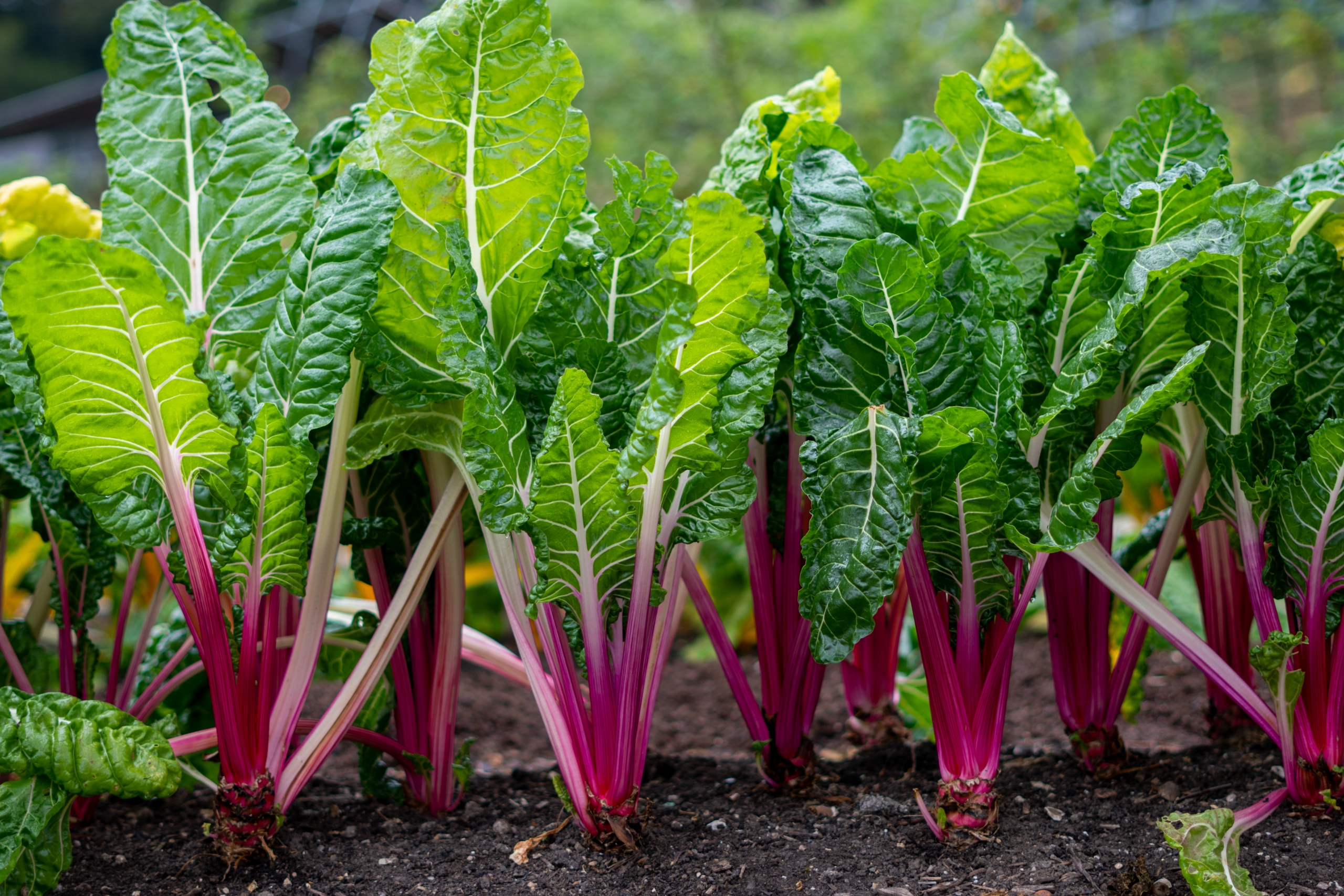
Chard is expensive to buy in the grocery store, but it is extremely easy to grow.
Chard will grow all fall, winter, and spring; if you have ideal conditions, you can grow it through summer. Summer temperatures can turn the leaves bitter, so I stop growing them in April. The leaves and the large, thick stalk are cooked together; the texture is soft, and the taste is mild. My family likes it sautéed with butter and garlic.
Beet tops are delicious! Most people only eat the roots, which are also delicious, but the leaves are an added bonus. Beet leaves are partially red and beautiful in the garden. They have the same growing requirements as chard and are cooked like chard.
Both beets and chard are susceptible to nematodes, so if you have nematodes, these plants need to be grown in tall pots. Unlike chard, beets do not tolerate summer heat.
Salad greens: Traditional lettuces require rich, moist soil plus cool temperature. You should start those seeds now in pots inside at a window with full sun. In four to six weeks, you can plant seedlings in the garden and get a head start on your salad greens.
Arugula can be sown directly in the soil now, in a spot with morning sun. This plant will be fine in fall heat if you keep it moist, and once the weather cools, it can be grown in more direct sun.
Broccoli: Broccoli leaves can be eaten, but we grow broccoli for its large flower head. Broccoli grows as easily as other greens, and seeds can be started in pots or directly in the ground now. Because of the intense heat, wind and sporadic rain, I start broccoli seeds in pots (outside), so I can control their growing conditions.
Once the first large flower head is cut, small flower heads will be produced from side shoots. Broccoli can produce this way for at least two months. The plant requires full sun and can take two months or more to produce the first flowering head. Be patient.
Next blog will begin a discussion on tomatoes.
 Real estate agent Joyce Woodson loves gardening and sharing what she knows. The founder of “Straw Hat Gardening,” she has taught classes on basic organic gardening and provided garden consultations. To reach Joyce, email gardening@joycewoodson.net.
Real estate agent Joyce Woodson loves gardening and sharing what she knows. The founder of “Straw Hat Gardening,” she has taught classes on basic organic gardening and provided garden consultations. To reach Joyce, email gardening@joycewoodson.net.

